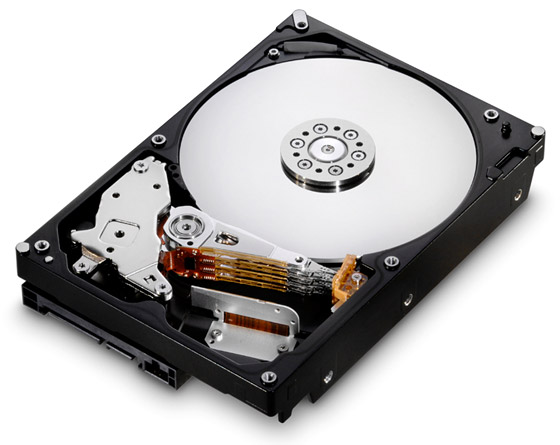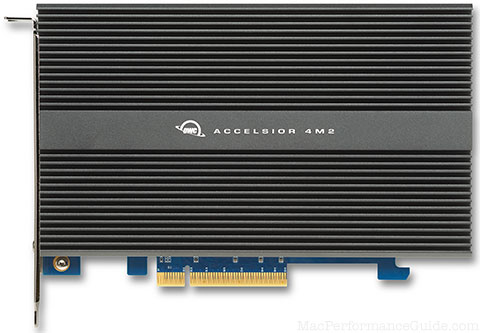
|

|

|

|

|

$220 SAVE $130 = 37.0% Western Digital 16.0TB Western Digital Ultrastar DC HC550 3.5-in… in Storage: Hard Drives
|

|

|

|

|
Memory and Drives for Snow Leopard
Related: Apple macOS, Lightroom, Mac Pro, memory, Photoshop, RAID, RAID-0, SSD
More than ever, adequate memory will help you get the performance you want, especially photographers working with Photoshop, Lightroom, Aperture, etc.
Performance needs balance
Snow Leopard is far more efficient than Leopard; it eliminates a variety of performance bottlenecks. The new efficiencies mean that sub-optimal memory amount and/or speed and/or disk speed now influence performance more than ever before.
Performance gains will vaporize with too-little memory. I used 12GB of memory for the Mac Pro quad-core for most tests in the report. Most of the tests would have run OK with only 6GB by themselves, but running other programs at the same time can change the picture.
Disk speed also influences performance. When I ran the Aperture test on the slow boot drive, it took 30% longer than on the 4-drive striped RAID. So if your work involves large image files, you ought to be thinking about higher drive performance, and that means RAID in most cases. See my consulting page.
Memory PERMALINK
Here’s a quick and easy way to think about memory:
With memory prices on the rise, more memory sooner rather than later is a good idea (as of September 2009).
- Allow 2GB for Mac OS X: that’s for the system itself as well as a gigabyte or so for file-system caching, which speeds up all sort of things.
- Allow 4GB for Photoshop C4, 4GB for Aperture, 4GB for Lightroom, 1-2GB for most other programs. You can check on things in Activity Monitor.
If you’re running all these programs at once, memory needs can quickly add up, but it all depends on what you’re doing. To be on the safe side, a CS4 + Lightroom and a few other small applications means that 8GB will probably be just fine. But 12GB is going to eliminate any issues, allowing you to forget about it and get on with your work.
I strongly advise Mac Pro users to go to 12GB; you can putter along with 6GB, but presumably the Mac Pro was purchased because the tasks are more demanding. Power users can go to 16GB or 24GB, but it’s usually not necessary. Memory prices are likely to continue to rise as 2009 progresses. If you’re not sure, contact me for a consultation.
How much memory?
Mac Pro users can get by with 6GB in some cases, but the smart move is to go straight to 12GB, which is adequate for nearly all photographic uses; 8GB can teeter on the edge of not enough, so don’t mess around; get on with your business. Or you can spend time and study your particular situation. In most cases, 12GB means you won’t have to think about it ever again.
Power users might find 24GB useful (8-core model only), and 32GB is only for truly exceptional needs. Photoshop users should see Optimizing Photoshop for where the limits lie. As more programs become 64-bit and can use more than the ~3GB possible as 32-bit programs, the value of more memory will increase.
Mac Pro Nehalem quad-core is not limited to 8GB
Mac Pro Nehalem users with the quad-core (single cpu) model are not limited to 8GB, but can go to 12GB or 16GB, using 4GB modules.
For the quad-core Mac Pro Nehalem, I recommend 12GB to start with, because it’s less money than 16GB, and 12GB actually yields faster memory speed than 16GB (though this generally makes little difference). Going to 16GB makes sense if you’re bumping up against the limits of 12GB.
The 8-core Mac Pro Nehalem has 8 slots and so 12GB can be installed as 6 X 2GB modules. But if you’ve invested in the 8-core model, you might consider 24GB as 6 X 4GB modules.
Mac Pro Nehalem 8-core — some choices
For optimal memory speed (triple channel), get 12GB as 6 X 2GB modules. Also optimal is 24GB as 6 X 4GB modules. For more on memory speed, see Mac Pro Nehalem memory tests.
Memory for other Macs
All the Macs other than Mac Pro are limited to 8GB. Get 4GB minimum, 6GB or 8GB if your Mac takes it, and you can afford it.
Fast drives PERMALINK
Adequate memory and a fast CPU are two legs of the performance tripod: your otherwise fast Mac can waste its potential without fast disk access. A solid state drive is one solution, but not a good one for a scratch volume, or any write-intensive scenario, due to internal fragmentation.
There are various solutions to faster disk access, including a RAID stripe, but achieving both performance and reliability is your smart move.
Got a Mac Pro? Get four of the Hitachi Deskstar E7K1000 for the internal bays (RAID of various flavors), and an SSD for your boot drive like the Crucial 128GB.
Test your drive speed and reliability, especially RAID, with DiskTester.
It’s an especially good idea to run test-reliability before putting a RAID into production work: new hard drives are not surface-checked for bad blocks.
Setup
In brief, Mac Pro users should consider a 2-drive striped RAID as a Master drive, a separate boot volume, and an internal backup volume for Time Machine or other solution. Consider a consultation to understand these issues and arrive at a high-performance setup that protects your critical assets, especially if you’re a professional and have your business on the line (you cannot re-shoot a wedding!).
Seagate 22TB IronWolf Pro 7200 rpm SATA III 3.5" Internal NAS HDD (CMR)
SAVE $100

 diglloydTools™
diglloydTools™




